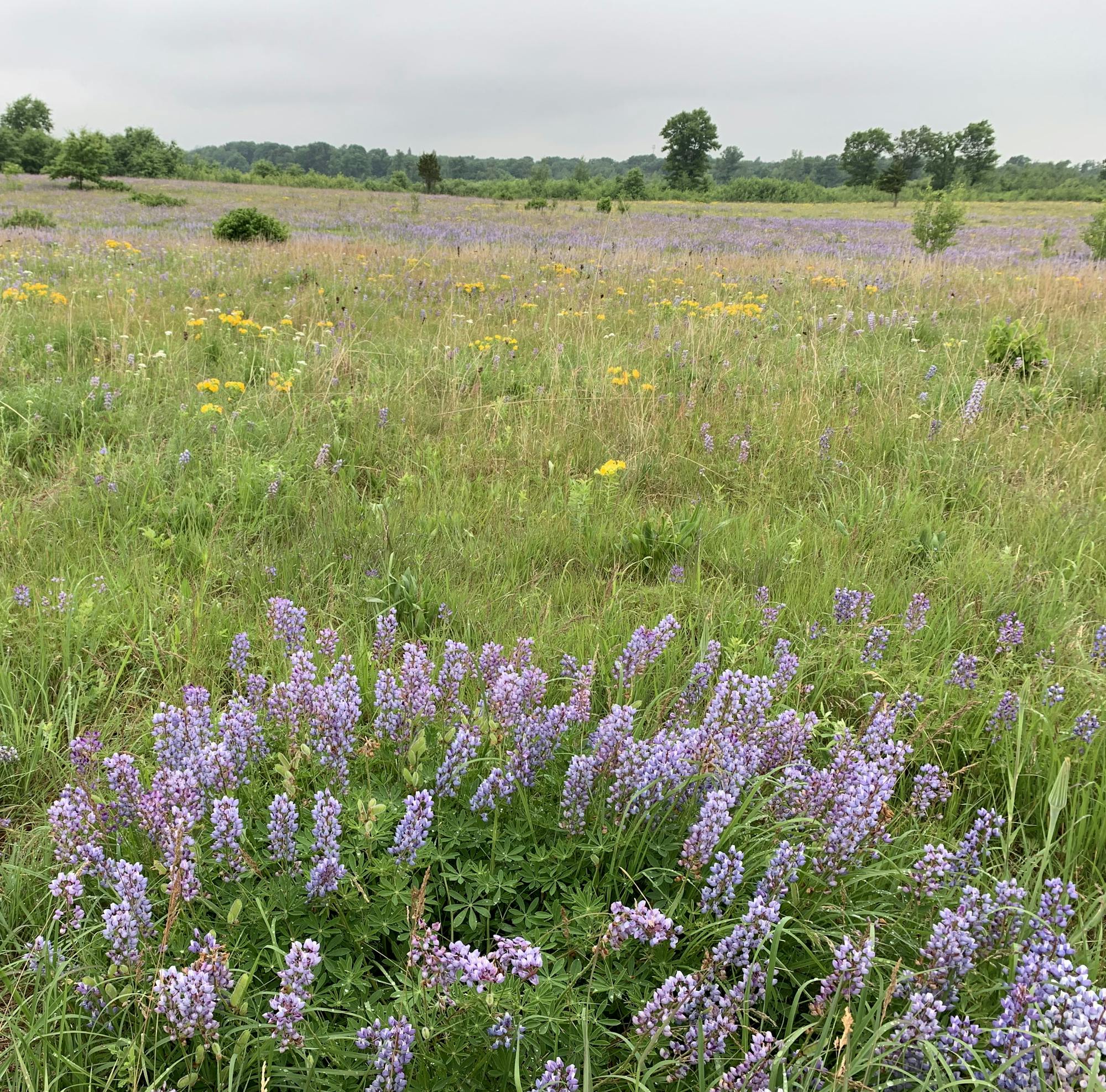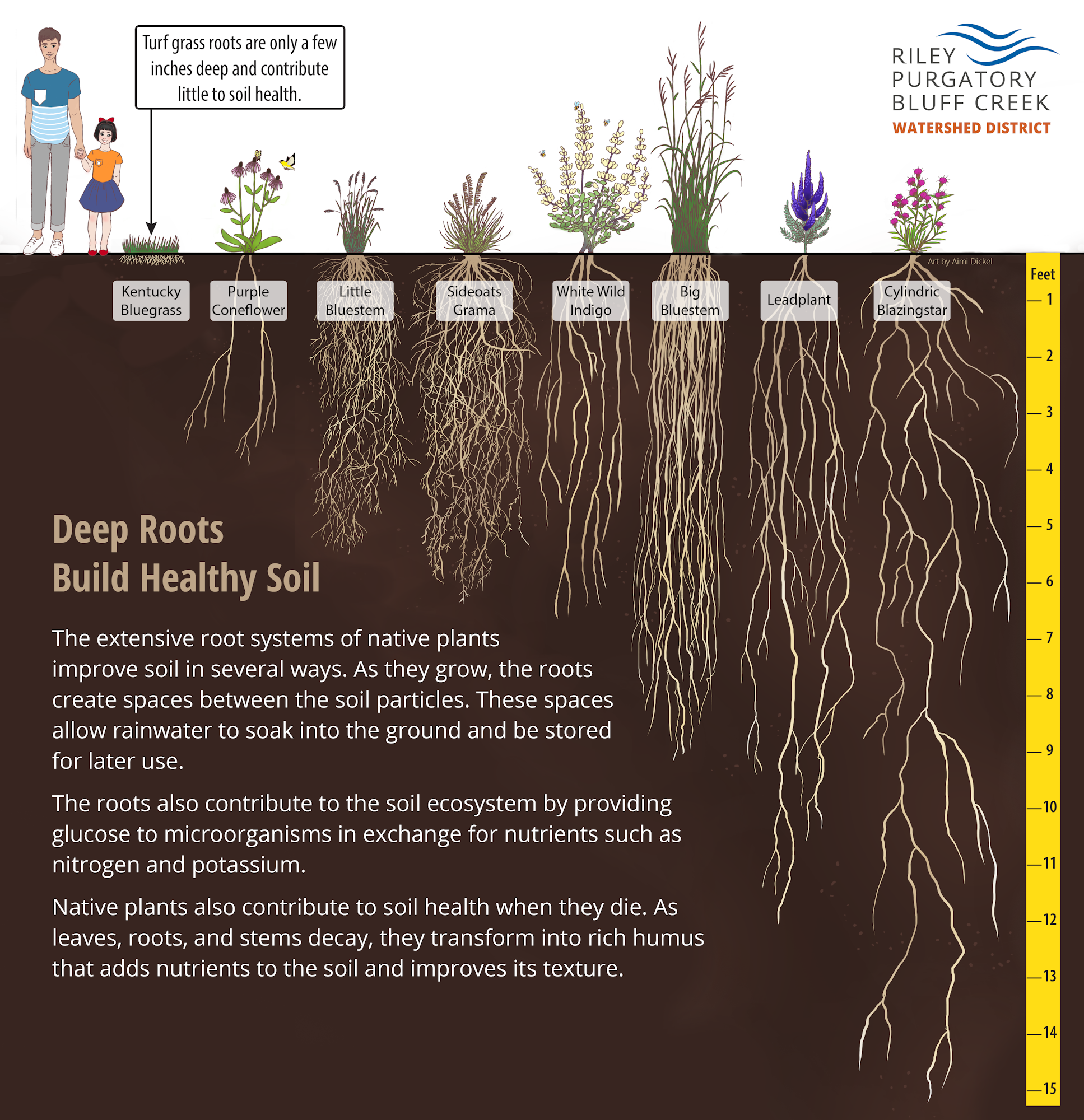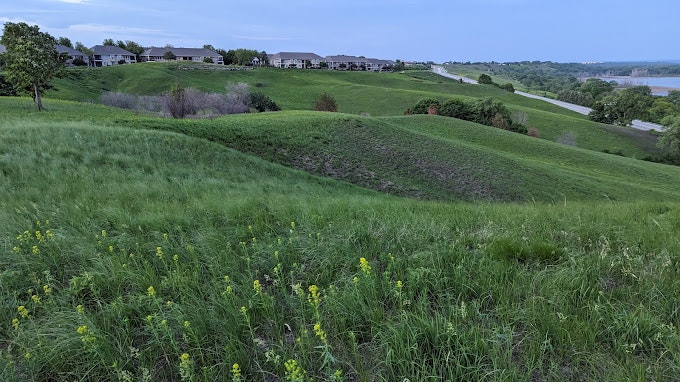Prairie

What is a Prairie?
A prairie is a type of habitat dominated by native grasses and wildflowers. Prairie soils are rich because the plants have built up healthy soil will lots of humus over a millenia. Fire is an important tool in maintaining a prairie as it prevents the growth of most trees. Grazing or mowing can also be used in place of fire to maintain a prairie. Grazing by bison and other herbivores also contributes to nutrient cycling.
About one-third of Minnesota used to prairie. Today only about one percent of this habitat remains. Learn more about prairies from the MN DNR.
What about an Oak Savanna?
An oak savanna is similar to a prairie but has more trees. Prairies and savannas often occur alongside each other with one merging into the other. Learn more about oak savannas from the MN DNR.
The Benefits of Prairie Plants
You don't need to own a lot of land to grow a prairie. Consider adding a "pocket prairie" somewhere in your yard. Not only will you improve soil health and benefit water quality, but you will also create a refuge for bees, butterflies, and birds. Several native plant companies offer pocket prairie kits to simplify planning. Check out our native plant resources page for guides and a list of native plant vendors.
The image below shows a comparison between turf grass (Kentucky Bluestem) and several native prairie plants. The size of the roots have a huge impact on water quality!

Prairies in the District
There's several example of prairie in the District. The best example of remnant prairie is the 55-acre Prairie Bluff Conservation Area managed by the City of Eden Prairie.
Download the Prairie Bluff Conservation Area map.

Join the Native Plant Movement
There's a growing movement to regenerate biodiversity and restore ecosystems called Homegrown National Park. The organization offers guides to help homeowners incorporate native plants into their yards, and there's even a biodiversity map where people can add their projects.
In Minnesota, the Lawns to Legumes program from the MN Board of Water and Soil Resources offers of combination of workshops, coaching, planting guides, and cost-share funding for installing pollinator-friendly native planting in residential lawns. Blue Thumb is another Minnesota program with a network of clean water and native plant stewards helping people learn and take action. Their partners include watershed districts, cities, non-profit organizations, and private companies.
RPBCWD also offers a Stewardship Grant Program to assist property owners with a site visit to offer advice and cost-share funds. Some cities also offer cost-share programs for native plant projects!


